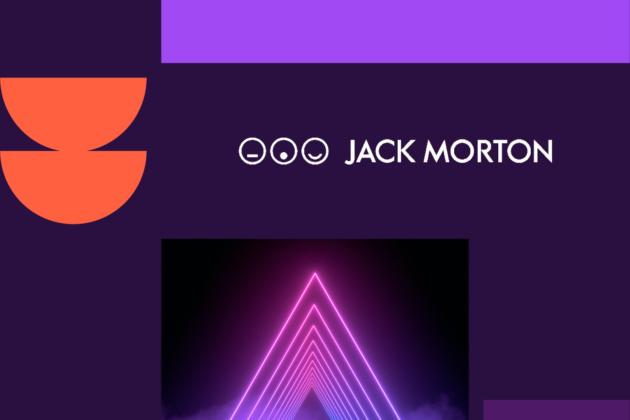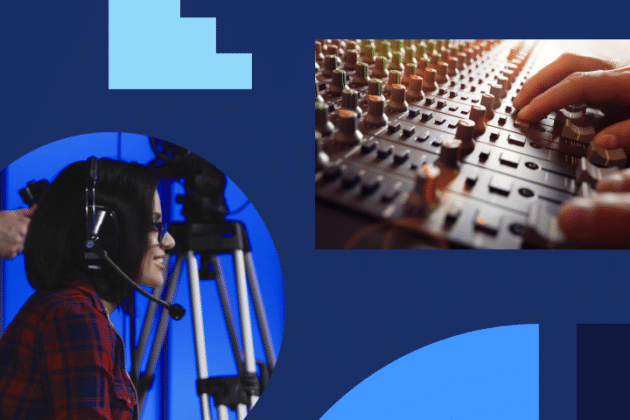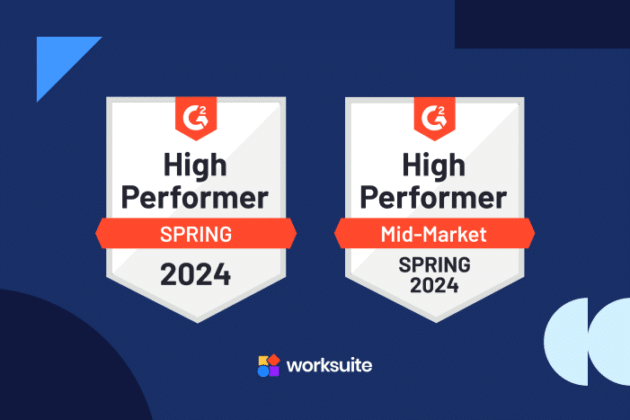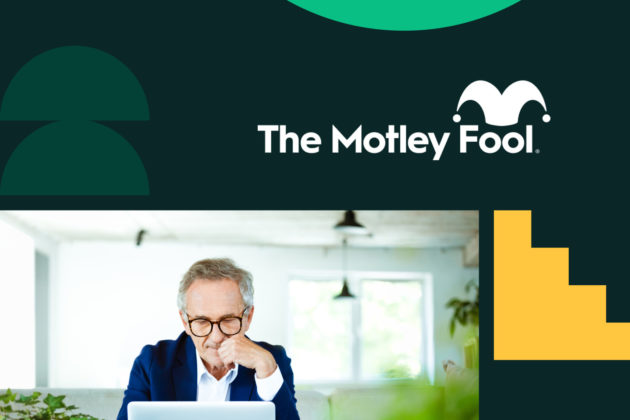
Mastering Freelancer Management with Justin Rentzel of Red Tettemer and Insomnia Cookies
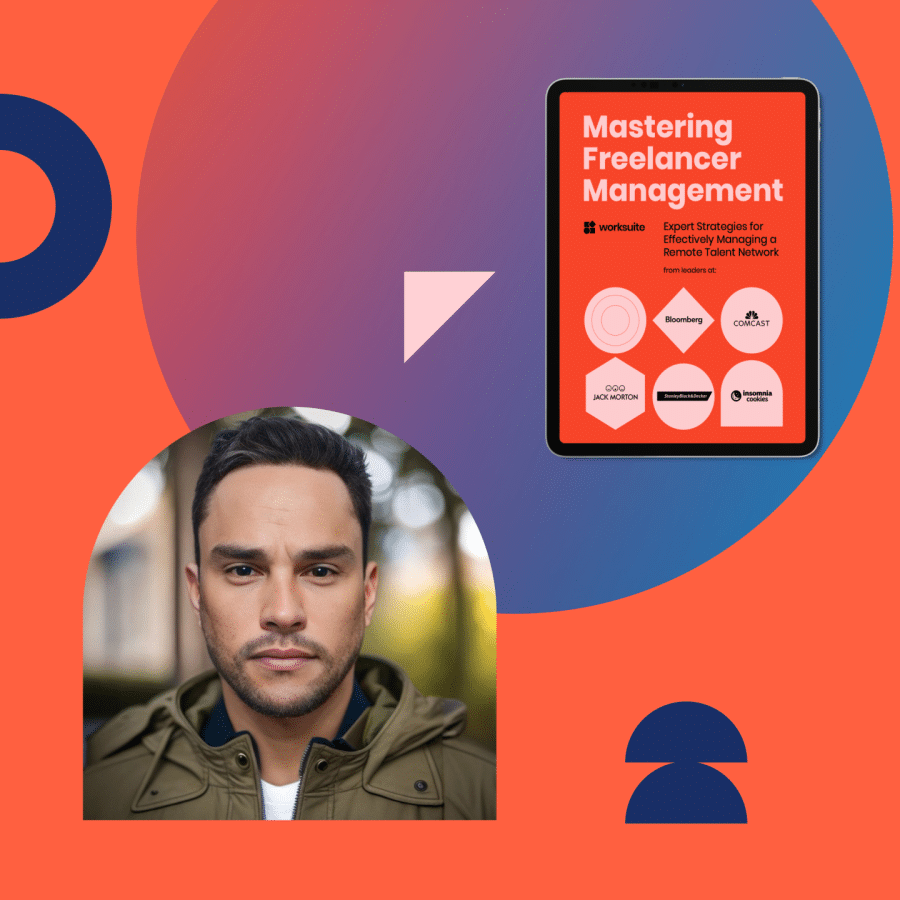

This in-depth interview is part of Worksuite’s ongoing series on Mastering Freelancer Management: Expert Strategies for Effectively Managing a Remote Talent Network. Download the full guide here, and subscribe to our YouTube channel to see the latest videos.
Justin Rentzel
Creative Director, Red Tettemer O’Connell + Partners
Former Head of Creative, Insomnia Cookies
Justin Rentzel is currently Creative Director at Red Tettemer O’Connell + Partners (RTO+P) based out of Philadelphia. He previously was Head of Creative at Insomnia Cookies. Justin has led creative work for brands including Chipotle, Hendrick’s Gin, Dick’s Sporting Goods, Dietz & Watson, Victory Motorcycles and Century 21.
What do you love about your job when it comes to managing creative work?
I’ve always loved the “idea.” The execution is fun too, but to me, the real fun part is concepting that initial idea.
And as creative director now I can give a starting place, that initial idea to the team and let them kind of push the pixels, write the copy, and then just guide them in my vision. It’s nice to have it. I mean, obviously I still have executive directors but it’s nice for it to be, you know, my full vision and the way I see it from art to copy.
And when it comes to bigger brand projects, with various production crews, freelancers, internal and external resources alike – what are some challenges that you’ve seen along the way?
The distance is a big challenge with managing freelancers. My skills with managing freelance talent actually got exponentially better during Covid, because basically everybody was a ‘freelancer’ at that point. I actually started my job in-house for Insomnia Cookies, the week before the whole pandemic shutdown.
So I never even got to meet my team in real life for about a year and a half which was pretty crazy. So basically at that point I am managing freelancers. So I had a team then and then we would also work with freelance vendors and whatnot. But you know, over that two year span.
Now I feel like I can come into any position now that we’re back in the real world, and manage from a distance, which was unbelievably hard at the time to do.
The distance is a big challenge. My skills with managing freelance talent actually got exponentially better during Covid, because basically everybody was a ‘freelancer’ at that point.”
Yeah, we’ve heard that a lot with the different time zones and collaborating creatively from afar. What are some actionable ways to do that? How did you find solutions to bridge that distance gap?
So a few different ways. Obviously the old-school way is, is email that’s what obviously everybody does, but. I was never into project management tools until again, I went in-house at Insomnia Cookies. Everything was a little bit different.
And we started using Asana, which was really great. I’ve always been one of those kinds of people that when I get feedback I love to be in the office. I love to be able to walk down the hall or bring you in. You walk me through it in person. We workshop it live. But obviously with video, you can’t do that.
So these project management tools really helped and just really staying constantly in communication on Slack, you know, starting Slack channels outside of the company, I didn’t even know you could do that. But now I know you can actually have cross-company slack channels or you know, with your freelance vendor or whatever it might be.
But I think the key is to really stay in constant communication. I’ve also learned, to your point about time zones, that never even crossed my mind before. And I’ve actually missed so many meetings where I was late or early due to the timezone difference.
So now I have this paranoia. When I’m setting up meetings, even if I know where the vendor’s at, I, it’s just habit now to write EST or check in with them and see what their time zone is. But that’s definitely a key piece of information that now I do all the time as a habit.
I think the key is to really stay in constant communication.”
How do you brief out creative work to make sure that people are working within the vision that you mentioned? Has that changed?
Not really. My go-to for briefing creative work is I usually like putting together a Google Slides deck. It’s almost templated at this point — mood board, color palette, reference imagery. And then I’ll even start throwing even if it’s a TV spot, I’ll just start writing headlines in there.
Just to get that tone of voice that’s in my head, for part of that mood board. So it’s almost a five to six-page deck that is one big mood board of where my direction is heading. And then I followed up with white paper ideas of just initial thought starters of, of nuggets of information or ideas that can be to see if you could explore it, to see if they have legs and, and where they go.
So I enjoy giving a starting point, but I also encourage them to add their own ideas in and I found that I’ve gotten pretty good over the years of taking that idea, their nugget whatever they come up with, and finding that kind of diamond in the rough in it, and then polishing that up and bringing that to life.
I don’t think any idea is a bad idea. I think there’s always something interesting in there, and you just have to dig it out.
Nice. I’d love to learn more about that. Especially when it comes to external talent – such as designers – how do you pull those nuggets of insight out of an idea that you think has legs?
Especially from afar that is, that’s kind of an intangible it’s, it’s almost like a gut feeling like this idea might not be right, but I think we could take it this way. Here’s how I see it. And then they’re like, oh yeah, it’s interesting.
And then they start building upon that. But yeah, there’s really no rhyme or reason to it. It’s. I just feel like, oh, this is, there’s something really interesting here. And I’m a big analytics and data guy too. I love thinking about the insights as well. I think if they come up with the idea that there is some sort of human truth or insight. That’s what I kind of latch onto.
The fluff ideas you know, you can squeak one through here and there, but I find the best ideas, the ones that have legs and can go far are the ones with those truths built into them.
Yeah. I love that. Switching gears a little bit when it comes to working with new talent, How do you onboard new talent into a project or brand?
Well, starting with brand guidelines is a good place for onboarding. And even outside of the brand guidelines, what does this brand stand for? I think brands are way more extensive now than they used to be in the sense of, they’re almost lifestyles now.
And yeah, while you have your color palettes and tone of voice and everything, they’re the successful ones are really more of a vibe, more of a lifestyle and trying to get that lifestyle and vibe and you know, general direction of the company and what they stand for and what the product means to consumers.
I think is the most important. Obviously, you can walk anybody through a brand guide and show them, Oh, Sheetz has red and yellow as their colors, but like what they really stand for is their people, what they call their ‘Sheetz freaks.’ And it’s a whole lifestyle. You come in there, you get your gas, but you also get your food and any other, you know, things you’re picking up along your road trip. So yeah, does that answer your question?
Yeah, I’m curious about some of the “intangible” nuances, when it comes to matching talent to the right projects…
Yeah, I think this is going to sound very basic, but just their style. And you know, if you’re a photographer, you have a specific post-production treatment, you have a certain way.
That you shoot people, what angles you know, what their lighting looks like. If it’s a designer, you know, if, if I have a brand that’s fresh and modern, uber modern and minimalist, then, you know, I’ll, I’ll go through my Rolodex of that specific type of designer. Same thing with copywriters.
If it’s a brand like Sheetz, for example, again, we have our more comedic writers right. But I’ve also farmed out a 2,000-page guide for processes. I think it was an SOP, I think where I went right to my technical writer who I knew I would never let around my headlines or TV spots, but damn, can they write some great technical copy and love it too.
I find the best ideas, the ones that have legs and can go far are the ones with those truths built into them.”
As someone who has also freelanced and been on the agency side, and now been on the enterprise brand side, what advice would you give to anybody who’s managing creative freelancers, in terms of how to get the best out of their talent?
Again, going back to that constant communication, I think the more check-ins the better. I don’t want to call it hand-holding, but I’m kind of a hand-holder. I don’t believe in wasting people’s time, especially when it comes down to paying freelance hours. So I like to stay pretty involved in the process, and just not have them run down paths that I just don’t think are going to work.
I think it’s crucial to really manage those small amounts of freelance hours that you have. Because budgets, you know, are getting slashed year after year and you have fewer hours to use. So you really have to be smart with them. And you really have to consider you know, if it’s a larger scale project, you have to consider if I already know I need a full day of photography, right?
Does that eat into my design hours? Does it eat into my copywriting hours? So kind of thinking through the scope of each of those segments before the project even starts is super helpful because you don’t want to spend all your hours on one facet of the project and have nothing left for your designers, because then you’re going to do it yourself.
I’ve been there.
How do you control that scope creep? And you mentioned budgeting and making sure people don’t go down the wrong path creatively, especially when it comes to freelance hours within a limited budget, how do you control that and make sure that you don’t have “rogue spend”?
Yeah I think that comes to that pre-planning thinking about siloing your hours and then staying in constant communication with them, constant check-ins and it’s kind of like case by case it’s hard to really give one specific answer.
Is there an example that comes to mind where things were “going rogue” with freelance hours and you had to approach that and figure out how to reallocate things?
Yeah, a good project recently was I worked with a freelance photographer and production company producer on some social media spots with Justin Jefferson for Insomnia Cookies.
And the budget was already very, very low to begin with. And that it just kept creeping up. And creeping up and creeping up. So what we did is kind of put the creative concepting and planning on pause at the beginning. And we said, Alright, so this is heading in a direction that is going to be very expensive.
Just with my background in production, I can start seeing like the dollar signs flashing with, you know, what the background of the set’s going to look like, the location and everything. So I’m like, let’s pause this, let’s all meet up as a team. So me, the photographer and the producer came together and said, all right, let’s figure out a way to cut the location.
And let’s figure out a way to cut the props and cut the wardrobe and do something really creative. And it ended up actually benefiting the project exponentially because we had to be really creative. chopping a lot of that out, but we came up with this really great idea of almost placing him watching TV in this void.
Think of Stranger Things — that dark void. So we really found this dark studio that we had just two lights and we didn’t have to get all the exponential lights. We had some mood lighting set up around, and then we just added a little touch of atmosphere in post and, you know, the end product ended up being way cooler than I think it would have been if it was just in, you know, what we would consider his house or, or whatever.
So it added this layer of creativity and unexpectedness to the project.
I don’t believe in wasting people’s time, especially when it comes down to paying freelance hours. So I like to stay pretty involved in the process, and just not have them run down paths that I just don’t think are going to work.”
That’s really cool. I guess it’s true what they say then about the creative limitations that lead to better ideas.
Yep. Yeah. It really forces you to think creatively. Sometimes you get caught up in muscle memory and, and going back to this stuff that you know, or you’ve seen, but when you actually have to stop and think like, Hey, we get, how do we do this within a certain budget?
You start getting really creative and diving into the depths of your brain that you didn’t really know you had.
That’s awesome. Another project that I remember you worked on that I’d love to hear about if you’re willing to share is that Super Bowl spot with Craig Robinson. I imagine that was crazy… with internal and external talent, probably different vendors, a very strict timeline, large budget… Can you share more about that experience in terms of managing all the creative resources and production?
Yeah. So it’s funny. I don’t know how to answer this one because we actually got managed by the production company, if that makes sense. So what I mean by that is we actually reached out to Neil Brennan, Dave Chappelle’s writing partner. And he started getting into directing at the time.
I think he had done a couple other smaller spots. But super talented, super funny but he really kind of led the charge on a lot of the decisions. We brought the idea, obviously, of the product, which we had worked on internally at the agency. Wrote the concept, the scripts and everything, but he was very influential on you know, tweaking the scripts to add extra layers of comedic value.
And you know how the shots should be laid out and the location that it should be at and, and really brought just another level to the spot. He did a really great job with it. And, but again, that was you know, that was a team effort, but he definitely elevated the project. That’s so cool.
Was there anything unexpected that happened along the way that you guys had to solve for?
Craig Robinson was a little late, but that’s like every celebrity. Oh, actually there was something… So Craig did the spot with his brother. That wasn’t our original intention and was kind of a really big surprise.
His brother had never done any acting, at least that I know of. But I think he was trying to get into it and he’s like, “If you want me, you were using my brother.” But it ended up working out great. They had great chemistry. I just liked that layer of it being his brother versus just some random friend.
And it just brought some authenticity to it. That was really interesting. He’s so talented, man. He even did the riff, this whole keyboard song about hoagies. We gave him kind of like a starting point, but he almost ad-lib some of it, and it was hilarious.
He’s a super, super talented, super funny guy.
It adds an extra stressor to creative directors, and brands, because now ‘managing’ is not just managing the creative – it’s managing people.”
That’s awesome. Well, just one other question that I’m asking everybody but you know, there’s a lot of hot takes around, “The future is freelance.” So I’m just curious, what’s your take on the future of the creative workforce?
It’s definitely a generational shift, and I think it’s going to be a massive divide in certain generations with other generations and also the collaboration of bridging that divide, I think is going to be “interesting” is one word for it.
I’m a big collaborator. Like we talked about, I like doing everything in-person. I like being around the team. It brings energy. It brings ideas. Some of our best TV spots, like when that Craig Robinson thing, the “Dietz Nuts” thing. That was at 1 a.m. Over a beer with some buddies. We were just sitting in our office, and talking about it.
And it ended up becoming a new product, the Super Bowl spot. And we got to work with Craig Robinson. That’s my take. I totally see where the whole freelance thing comes from. But I think what it comes down to is it adds an extra stressor to creative directors, and brands, because now managing is not just managing the creative, it’s managing people.
And I’m not saying all creative directors are terrible at it, but they like managing the creative and not the people. And it’s really hard to do that from afar. And it’s really hard to collaborate from afar and give direction. And then you just miss that energy and that connection with other humans. Make it a point to really stay connected with your team, even if you’re not there in-person. Don’t make everything impersonal with emails and Slacks.
You can rely on tech like Zooms and all of that, but you need to see that person, look them in the eye, have conversations whether they’re hard or fun, or whatever it might be, but make sure that you never lose that human touch, because that’s where at least a lot of my creativity comes from.
I feed off the energy and the ideas of other people. And I think it really only benefits the work.
Make it a point to really stay connected with your team, even if you’re not there in-person.”
Key Takeaways
- Managing creative talent from afar is a common challenge
- Over-communicate with frequent check-ins and task management tools to stay aligned on the creative direction
- Constant communication and involvement in the creative process ensures your freelancers don’t go down paths that aren’t going to work (thereby saving budget)
- The best ideas are the ones that have truths baked in
- Build a reusable Creative Brief Template for scalability (mood board, color palette, reference imagery, tone of voice, headline ideas)
- Brands are a lifestyle now. When onboarding new talent into a brand, make it clear, “what does this brand stand for?”
- Use tools and templates wisely to free up time for creativity and human connection

